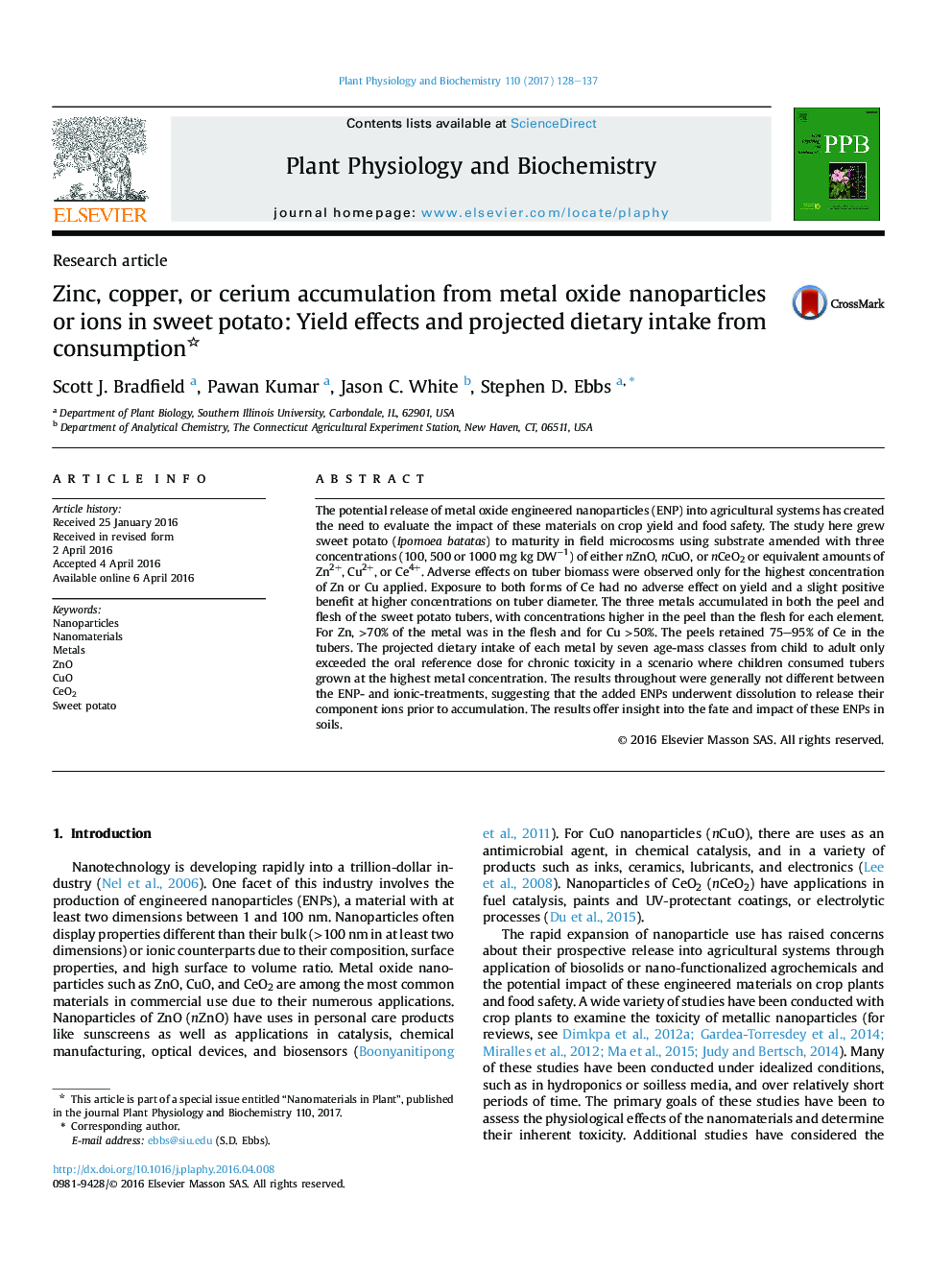| کد مقاله | کد نشریه | سال انتشار | مقاله انگلیسی | نسخه تمام متن |
|---|---|---|---|---|
| 5515334 | 1541911 | 2017 | 10 صفحه PDF | دانلود رایگان |
• Reduced sweet potato biomass yield was observed with Zn or Cu at 1000 mg kg−1 soil.
• Metals accumulated more in sweet potato peels that in the tuber flesh.
• Little risk from consumption was projected for dietary intake of Zn, Cu, or Ce.
• No consistent differences occurred between the nanoparticle and ionic forms.
• Results suggested dissolution of the nanoparticles in the microcosms to ionic form.
The potential release of metal oxide engineered nanoparticles (ENP) into agricultural systems has created the need to evaluate the impact of these materials on crop yield and food safety. The study here grew sweet potato (Ipomoea batatas) to maturity in field microcosms using substrate amended with three concentrations (100, 500 or 1000 mg kg DW−1) of either nZnO, nCuO, or nCeO2 or equivalent amounts of Zn2+, Cu2+, or Ce4+. Adverse effects on tuber biomass were observed only for the highest concentration of Zn or Cu applied. Exposure to both forms of Ce had no adverse effect on yield and a slight positive benefit at higher concentrations on tuber diameter. The three metals accumulated in both the peel and flesh of the sweet potato tubers, with concentrations higher in the peel than the flesh for each element. For Zn, >70% of the metal was in the flesh and for Cu >50%. The peels retained 75–95% of Ce in the tubers. The projected dietary intake of each metal by seven age-mass classes from child to adult only exceeded the oral reference dose for chronic toxicity in a scenario where children consumed tubers grown at the highest metal concentration. The results throughout were generally not different between the ENP- and ionic-treatments, suggesting that the added ENPs underwent dissolution to release their component ions prior to accumulation. The results offer insight into the fate and impact of these ENPs in soils.
Journal: Plant Physiology and Biochemistry - Volume 110, January 2017, Pages 128–137
